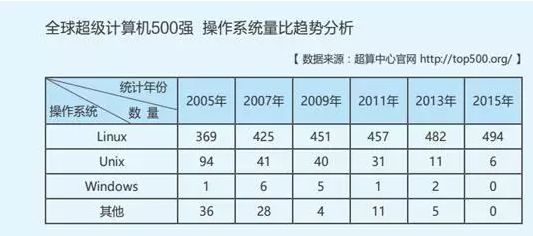First of all, congratulations on choosing Linux—you're now on the path to mastering one of the most powerful and versatile operating systems in the world. Before you dive deeper, let me walk you through everything you need to know about Linux and its operations and maintenance.

Linux is renowned for its efficiency, flexibility, and wide range of applications. It has become the backbone of high-end servers and holds an irreplaceable position in modern computing. Linux can be installed on a variety of devices, from mobile phones and tablets to supercomputers. With the rapid growth of Linux in the Chinese market, there's a growing demand for skilled professionals, making Linux talent highly sought after.
Linux is a broad concept, and it's impossible to master everything at once. Ideally, understanding Linux means being able to handle a wide range of tasks. However, individuals often focus on specific areas based on their career goals. This article will explore the common domains of Linux and the corresponding job roles.
1) Linux Application: This involves running applications on Linux, such as web services, network infrastructure, and system development. It includes server optimization, operation and maintenance, and backend development.
2) Linux Customization: This area deals with custom Linux distributions, kernel modifications, and commercial support. Companies like Red Hat provide enterprise-level solutions, while local support is often available domestically.
3) Linux Kernel Development: This focuses on developing drivers and low-level components. It’s commonly found in chip manufacturers or companies that rely heavily on embedded systems, such as Intel or Huawei.
4) Android Derivatives: Since Android uses the Linux kernel, many mobile chip companies like Qualcomm and TI also hire Linux developers for their ecosystems.
Now, let’s focus on Linux Operation and Maintenance (O&M), one of the most in-demand fields in the tech industry. This role is critical for ensuring the stability, security, and performance of internet-based services. The work spans the entire product lifecycle—from design to deployment, maintenance, upgrades, and decommissioning.
The responsibilities of O&M engineers go beyond routine tasks. They must analyze problems, extract technical insights, and develop tools and platforms to optimize service delivery. Key areas include:
- Service monitoring technology
- Fault management and recovery
- Capacity planning and resource management
- Performance optimization
- Traffic scheduling and load balancing
- Security measures and access control
- Data transmission technologies
- Automated deployment and cluster management
- Cost optimization and database administration
These responsibilities cover a wide range of technical skills, including platform development, distributed systems, and cloud technologies.
Linux O&M is typically divided into several specialized roles, such as Application Operations, System Operations, Database Administration, and Security. Each plays a crucial part in maintaining the stability and performance of IT infrastructure.

Figure 1-1: Classification of the Operation and Maintenance Team
Key software and tools used by O&M engineers include web servers (Apache, Nginx), monitoring systems (Nagios, Zabbix), automation tools (Ansible, SaltStack), configuration management (Puppet), and cloud platforms (OpenStack, Docker).
To succeed in this field, professionals need strong technical knowledge, programming skills, data analysis capabilities, and the ability to leverage advanced tools and platforms.
Over time, O&M has evolved from manual processes to automated, platform-driven workflows. The journey has seen phases like manual management, tool-based batch operations, platform-based management, and finally, self-scheduling systems that automate complex tasks.
In 2018, the landscape was shifting rapidly, with automation, DevOps, and cloud technologies becoming essential. To stay competitive, Linux O&M professionals needed to learn tools like Ansible, Puppet, Docker, Kubernetes, and cloud platforms such as AWS and Alibaba Cloud.
By continuously adapting and expanding their skill sets, O&M engineers can ensure the smooth operation of critical systems and contribute to the success of modern digital businesses.
Parallel Groove Clamp,Suspension Clamp For Cable,Forging Hot-dip Galvanized Steel Parallel Groove,Parallel Groove Clamp For Aluminium
Shahe Yipeng Import and Export trading Co., LTD , https://www.yppolelinehardware.com
